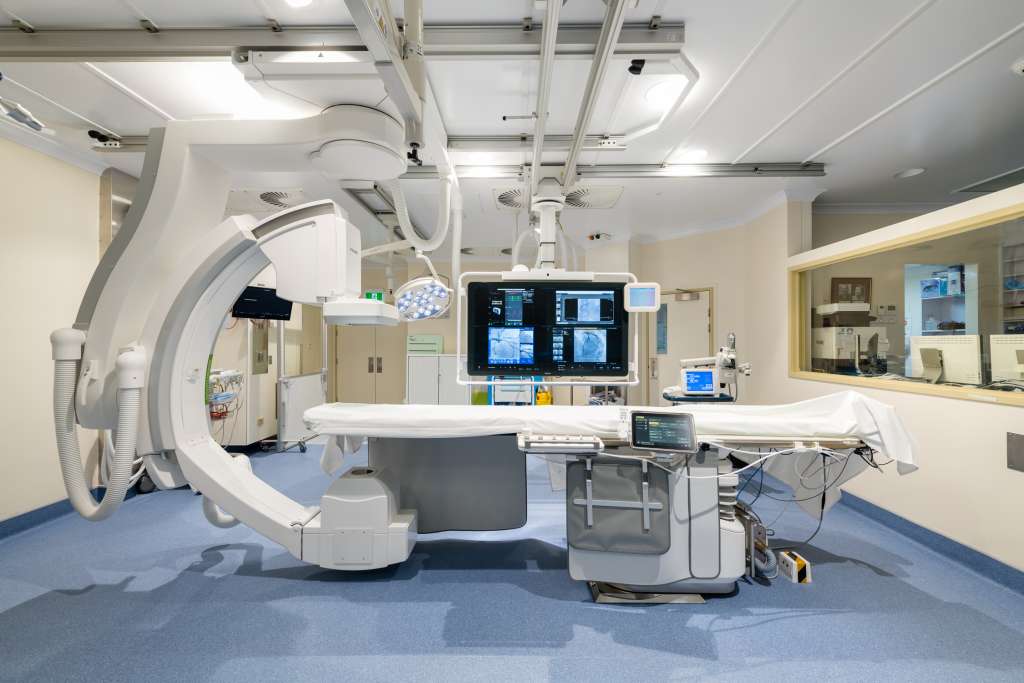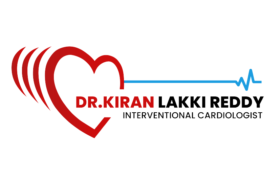Primary angioplasty, also known as percutaneous coronary intervention (PCI), is a medical procedure used to treat a heart attack (myocardial infarction) caused by a blockage in the coronary arteries. It is considered the gold standard treatment for acute myocardial infarction.
During primary angioplasty, the goal is to quickly restore blood flow to the blocked coronary artery and minimize the extent of heart muscle damage. The procedure is typically performed in a cardiac catheterization laboratory and involves the following steps:

- Access and catheter insertion: A small incision is made, usually in the wrist (radial approach) or groin (femoral approach), to access the artery. A catheter is inserted through the incision and guided to the coronary arteries under X-ray guidance.
- Angiography: A contrast dye is injected through the catheter, and X-ray images (angiograms) are taken to visualize the blocked artery and identify the location and severity of the blockage.
- Balloon angioplasty: A thin wire with a deflated balloon attached to it is advanced through the catheter to the site of the blockage. The balloon is then inflated, compressing the plaque against the artery walls and widening the artery to restore blood flow.
- Stent placement: In many cases, a stent, which is a small mesh-like tube, is inserted into the treated area. The stent acts as a scaffold to keep the artery open and prevent it from re-narrowing. Some stents are coated with medications (drug-eluting stents) to help prevent re-blockage.
- Post-procedure evaluation: Once the blood flow is restored, the success of the procedure is assessed by performing another angiogram to ensure adequate dilation of the artery and good blood flow to the heart muscle.
Primary angioplasty is typically performed as an emergency procedure, and the time from symptom onset to treatment is critical. The goal is to perform the procedure as quickly as possible, preferably within 90 minutes of the patient’s arrival at the hospital (referred to as the “door-to-balloon” time).
Benefits of primary angioplasty include improved blood flow to the heart, reduced heart muscle damage, and improved survival rates compared to other treatments for acute myocardial infarction. However, like any medical procedure, there are risks involved, including bleeding, blood vessel damage, clot formation, and allergic reactions to medications or contrast dye.
After primary angioplasty, patients are closely monitored in the hospital for a period of time. Medications, including antiplatelet agents and anticoagulants, are typically prescribed to prevent clot formation and reduce the risk of future cardiovascular events.
Long-term management after primary angioplasty includes lifestyle modifications, such as a heart-healthy diet, regular exercise, smoking cessation, and adherence to prescribed medications. Regular follow-up visits with the healthcare team are important to monitor the patient’s progress, assess cardiac function, and adjust medications as needed.
Get In Touch
- +91 90149 44654
- lakki.reddy.63@gmail.com
- ONUS Heart Institute, Saroornagar, Malla Reddy Nagar, Saroor Nagar East, Hyderabad, Telangana 500079
Copyright ©2023 All rights Reserved to Drkiran Lakki Reddy ll Develop & Design by Branding Nuts
